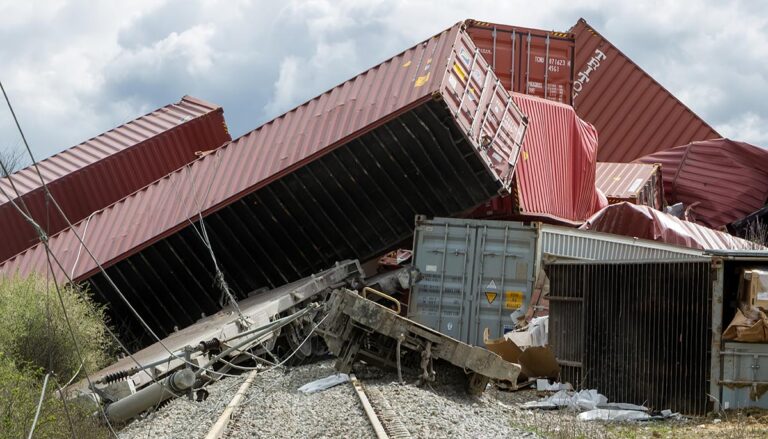The third train operated by Norfolk Southern to derail in just over a month – and the second in Ohio – occurred on Saturday, leading to questions. Calls for new safety measures are also rising. What is the cause?
A second train derailment in Ohio
On Saturday, March 4, the Norfolk Southern network experienced its second train derailment in just over a month in Ohio and third overall.
The March 4 derailment of 20 cars of a 212-car Norfolk Southern train occurred in Springfield, Ohio, and left more than 1,500 residents without power. The disaster also prompted a shelter-in-place order out of an abundance of caution, CBS News reported.
Authorities say there were no injuries in the derailment, and the train carried no toxic chemicals on board.
Questions over causes and safety after three Norfolk Southern trains derail in just over a month
This most recent derailment occurred near Route 41, some 200 miles west of a previous train derailment on February 3 in East Palestine, Ohio.
This latest incident becomes the third train operated by Norfolk Southern to derail in just over a month. The first happened on February 16, when a Norfolk Southern train derailed in Van Buren Township, outside of Detroit.
The March 4 derailment in Ohio has residents and a number of officials, including US Transportation Secretary Pete Buttigieg and President Joe Biden, asking questions pertaining to the causes and safety measures being implemented.
Buttigieg tweeted on Saturday he had been briefed by the Federal Railroad Administration about the derailment, as well as had spoken to Ohio Gov. Mike DeWine regarding the incident.
DeWine tweeted that he had spoken to both Buttigieg and President Biden.
Norfolk pledges to revamp safety measures
Roughly 1,000 derailments occur annually across the US, or nearly three derailments per day, according to the Federal Railroad Administration.
According to a report by USA Today, Norfolk Southern had previously fought against a Department of Transportation safety rule that could have helped limit the impact of the February 3 derailment.
Other factors increasing risks, according to experts, are train lengths and weight, both of which have grown significantly over the past decades as companies try to reduce costs, but which makes stopping trains far more difficult. In addition, rail operators have tried to decrease costs by cutting the size of their workforces.
On Monday, Norfolk Southern announced it will revamp its “hot bearing” detector network as part of a new six-point safety plan it is implementing, CNN reported.
“Hot bearing” or “hot box” refers to a system that uses infrared detectors to record the temperatures of railroad bearings as trains pass by. The detectors are programmed to trigger an alarm if they sense an overheated bearing. This alert notifies the train crew to stop the train and inspect the railcar for a potential failure.
In the February 3 derailment in East Palestine, Ohio, investigators determined that “hot bearing” sensors had detected a wheel bearing heating up miles before it eventually failed. However, it did not alert the train’s crew until it was too late, according to a report by the National Transportation Safety Board (NTSB).





